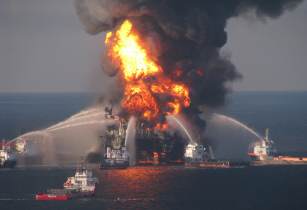In some countries, organisations are being made accountable for their own safety standards, while the regulator is more of a supervisor than a policy-maker
This idea was analysed by Nick Nooren, general manager, Middle East, India & Africa Hub at Lloyd’s Register Energy, who has discussed the variations in health and safety approaches in the oil and gas industry over the years.
The oil and gas industry has long been heavily regulated and governed by a variety of legislative frameworks and international standards. The norm was that prescriptive legislation – with the associated list of requirements – has been imposed on operators to ensure that occupational health and safety best practice is embedded deep in the company’s operation, onshore as well as offshore.
Why do we need goal-based regulation?
To avoid complacency and lack of operational transparency, ‘checking the box’ to comply with the law and limit legal liability is preferred rather than following a systematic approach to identifying health and safety risks and creating solutions to manage them. Some regions have resisted a transition to goal-based regulatory regimes because prescriptive regimes are simpler to implement, monitor, verify and prove compliance within the courtroom. But, as operators delve into more hostile or lesser-known environments to search for the remaining stores of oil and gas, prescriptive regimes are being found to be less adaptable to new technologies and the changing levels of operational risk. Moreover, they can stifle the innovation required to adapt, stated Nooren.
Past incidents such as the North Sea Piper Alpha explosion in 1988 in the UK precipitated a movement away from regulatory framework to a more risk-based approach wherein organisations were asked to set and meet key safety goals. A regulator would then monitor adherence to these goals, he observed.
The transition to a ‘goal-based’ approach placed the major responsibility on the operator or licensee to undertake a comprehensive risk assessment and ensure they have reduced the risks to ‘as low as reasonably practicable’ (ALARP). By holding organisations accountable while giving them more freedom to self-regulate and create practical solutions based on their experience, the goal-based regulatory regime has created a more cooperative environment in which the regulator assumes a supervisory rather than a policing role.
Today, this goal-based approach is being followed in other countries – regulators are continuing to develop policies and standards while moving away from micro-managing each asset’s operational environment aspect in favour of taking a supervisory, supportive role that provides guidance and performance monitoring. This trend has put a stronger emphasis on implementing occupational health and safety management systems, developing process safety, and ensuring asset integrity.
Old accidents, new timelines
Management systems play a key role in ensuring that occupational health and safety is maintained through a risk-based approach. They emphasise the development of a comprehensive risk assessment and standard operating procedures, which help ensure the safe execution of high-risk activities.
In response to the Deepwater Horizon oil spill in the Gulf of Mexico in 2010, which caused the largest marine oil spill in history, the Canadian National Energy Board commissioned the ‘Arctic Review’ – a comparative analysis of several major industrial accidents – to study the role that management systems played in major accidents, and to determine if there were any related trends or relevant lessons for incident prevention.
The assessment found that while most organisations involved in the accidents had developed management systems, those systems were often not effectively implemented or reviewed on a regular basis to ensure their continued adequacy and effectiveness. Most importantly, meaningful hazard identification and risk assessment processes were often not followed.
What this revealed was there were no new types of accidents, just old causes of accidents repeating themselves.
The report placed great importance on the role of corporate leadership in the prevention of major accidents. Managing process safety effectively, ensuring a competent workforce at all levels of the organisation, providing timely and accurate information for strategic decision-making, and promoting an understanding of the consequence of change in the operational environment are key leadership attributes that raise performance and ensure that occupational health and safety is given equal priority with any production goals.
Information integration
Another trend highlighted by the report is the importance of integrating information related to process safety and corporate culture when reporting health and safety performance. This encourages the industry to transition away from a focus on personal injury data as a safety measurement tool. Deepwater Horizon is a prime illustration of how that can lead management astray; in the days before the accident, the rig’s low personal injury data gave a false indication of the asset’s process-safety performance and the overall health of the safety culture.
Internationally-recognised management systems comprise programmes designed to achieve a reduction of risk to ALARP for the public, workers, contractors, asset, production and the environment.
To get a more complete picture of overall safety performance, regulators and organisations alike are being encouraged to look beyond ‘lagging’ indicators such as lost time injury (LTI) rates to consider indicators for both high frequency, low consequence events (such as worker injuries) and low frequency, high consequence incidents (such as blowouts and fatalities). This ensures that active and latent threats to process safety, such as asset integrity, human factors, organisational deficiencies, and safety culture, are identified and managed by the operator to maintain the greatest margin of safety.
Ensuring structural and asset integrity
The structural integrity of oil and gas installations and their supporting assets underpins the safety of all workers and the surrounding environment. In recent years, regulators and stakeholders have made more effort to embed best practice into the operation and maintenance of facilities. Operating an asset in an extremely corrosive environment, where it is exposed to high temperatures and pressures and adverse weather conditions, requires a strict system of inspection, analysis verification and repair, if the level of risk is to be controlled to ALARP levels.
In the UK, the creation of the ‘Safety Case Regulation’ and ‘Design and Construction Regulation’ ensured that asset-integrity strategies became part of the legislative framework that governs the operation of offshore installations.
Between 2004 and 2007, the Health and Safety Executive (HSE) – a UK government body – conducted a focused programme of asset-integrity inspections under the heading of ‘Key Programme 3’ (KP3). HSE defined asset integrity as “the ability of an asset to perform its required function effectively and efficiently while protecting health, safety and the environment”. HSE further defined asset integrity management as “the means for ensuring that the people, systems, processes and resources that deliver integrity are in place, in use and will perform on demand over the asset’s life cycle”.
KP3 found that the offshore industry did not have reliable KPIs in place to focus attention on asset-integrity measurement and provide reasonable levels of assurance that strategies to manage major hazards stayed effective as conditions change. The discovery initiated a global effort to embed asset-management strategies into existing management systems and planned maintenance routines.
Maintaining hardware to be safe, reliable and efficient is not only essential to manage the risk of the major accident hazards the industry faces but is also vital in creating a physical environment that people can be proud to work in, a key feature of an incident-free workplace.
Competence and human factors
In the past 20 years, there have been substantial improvements in the quality of assets and management systems that support and promote quality, safety, energy efficiency and the environment. Assets are now safer by design. It is generally accepted by the modern safety expert that at least 80-90 per cent of major accidents across all asset-intensive industries are caused by human factors, or human error.
Most safety practitioners now accept the next incremental advance in workplace safety will come from a better understanding of the influence that workers have on the operational efficiency of an asset.
Managing human factors on installations is as crucial to the safe operation of an asset as ensuring the right infrastructure and management systems are in place. A positive safety culture is essential, particularly in an environment where you have long, demanding shifts, difficult working conditions and a very high potential for fatigue.
In addition, with the ever-increasing global demand for energy creating a huge employment market, the oil and gas industry must manage a constant influx of new, sometimes novice, employees.
Most installations employ very comprehensive training and skills-evaluation programmes to ensure all workers (including contractors) are competent to perform their assigned task and are very familiar with the safe working procedures relevant to their activities. Most installations employ a ‘zero-tolerance’ policy for non-compliance and workers can be dismissed for the breach of a safety standard.
Understanding the influence of the human element is complex and its only the beginning of recognising the influence of the workforce on the efficient – and therefore safe – operation of onshore and offshore assets. But there are clear trends emerging. For one, emphasis is shifting away from a reliance on the deployment of company ‘safety police’ in favour of employee-engagement tools such as incentives, which give workers a stake in the process.
There is also much greater recognition of the importance of clearly defined roles and responsibilities with regard to safe practice. With global labour demands giving rise to the number of sub-contractors working at any given facility, it is vital that all parties understand their safety-related roles and responsibilities, and share common ways to measure success.





